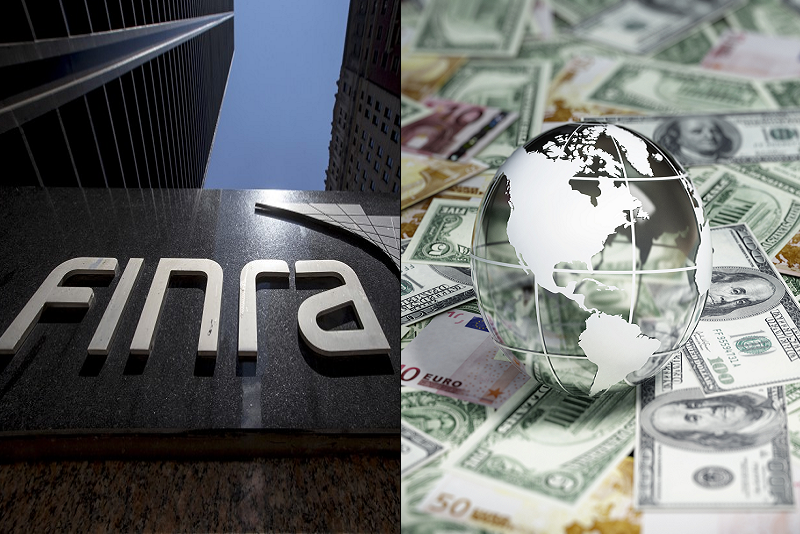BROWSE BY TOPIC
- Bad Brokers
- Compliance Concepts
- Investor Protection
- Investments - Unsuitable
- Investments - Strategies
- Investments - Private
- Features/Scandals
- Companies
- Technology/Internet
- Rules & Regulations
- Crimes
- Investments
- Bad Advisors
- Boiler Rooms
- Hirings/Transitions
- Terminations/Cost Cutting
- Regulators
- Wall Street News
- General News
- Donald Trump & Co.
- Lawsuits/Arbitrations
- Regulatory Sanctions
- Big Banks
- People
TRENDING TAGS
Stories of Interest
- Sarah ten Siethoff is New Associate Director of SEC Investment Management Rulemaking Office
- Catherine Keating Appointed CEO of BNY Mellon Wealth Management
- Credit Suisse to Pay $47Mn to Resolve DOJ Asia Probe
- SEC Chair Clayton Goes 'Hat in Hand' Before Congress on 2019 Budget Request
- SEC's Opening Remarks to the Elder Justice Coordinating Council
- Massachusetts Jury Convicts CA Attorney of Securities Fraud
- Deutsche Bank Says 3 Senior Investment Bankers to Leave Firm
- World’s Biggest Hedge Fund Reportedly ‘Bearish On Financial Assets’
- SEC Fines Constant Contact, Popular Email Marketer, for Overstating Subscriber Numbers
- SocGen Agrees to Pay $1.3 Billion to End Libya, Libor Probes
- Cryptocurrency Exchange Bitfinex Briefly Halts Trading After Cyber Attack
- SEC Names Valerie Szczepanik Senior Advisor for Digital Assets and Innovation
- SEC Modernizes Delivery of Fund Reports, Seeks Public Feedback on Improving Fund Disclosure
- NYSE Says SEC Plan to Limit Exchange Rebates Would Hurt Investors
- Deutsche Bank faces another challenge with Fed stress test
- Former JPMorgan Broker Files racial discrimination suit against company
- $3.3Mn Winning Bid for Lunch with Warren Buffett
- Julie Erhardt is SEC's New Acting Chief Risk Officer
- Chyhe Becker is SEC's New Acting Chief Economist, Acting Director of Economic and Risk Analysis Division
- Getting a Handle on Virtual Currencies - FINRA
ABOUT FINANCIALISH
We seek to provide information, insights and direction that may enable the Financial Community to effectively and efficiently operate in a regulatory risk-free environment by curating content from all over the web.
Stay Informed with the latest fanancialish news.
SUBSCRIBE FOR
NEWSLETTERS & ALERTS
FINRA Offers Guidance on AML Programs
by Howard Haykin
FINRA issued Regulatory Notice 19-18 to provide guidance to member firms regarding suspicious activity monitoring and their reporting obligations under FINRA Rule 3310, Anti-Money Laundering Compliance Program.
FINANCIAL INSTITUTIONS MUST FILE SUSPICIOUS ACTIVITY REPORTS (SARS). Under Treasury’s SAR rule a broker-dealer (“B/D”) must report a transaction to the Financial Crimes Enforcement Network (FinCEN) if: (i) it’s conducted or attempted by, at or through a B/D, (ii) it involves or aggregates funds or other assets of at least $5,000, and (iii) the B/D knows, suspects or has reason to suspect that the transaction (or a pattern of transactions of which the transaction is a part):
- involves funds derived from illegal activity or is intended or conducted in order to hide or disguise funds or assets derived from illegal activity (including, without limitation, the ownership, nature, source, location or control of such funds or assets) as part of a plan to violate or evade any federal law or regulation or to avoid any transaction reporting requirement under federal law or regulation;
- is designed, whether through structuring or other means, to evade any regulations promulgated under the BSA;
- has no business or apparent lawful purpose or is not the sort in which the particular customer would normally be expected to engage, and the broker-dealer knows of no reasonable explanation for the transaction after examining the available facts, including the background and possible purpose of the transaction; or,
- involves use of the broker-dealer to facilitate criminal activity.
IT’S ABOUT MONEY LAUNDERING RED FLAGS. FINRA first published a list of “money laundering red flags” in Special NASD Notice to Members 02-21. Since then, additional examples of money laundering red flags have arisen for firms to consider - which FINRA lists out in Monday’s RegNote 19-18, and which firms should consider incorporating into their AML programs.
Keep in mind these examples of red flags don’t constitute an exhaustive list and do not guarantee compliance with AML program requirements or provide a safe harbor from regulatory responsibility. For example, firms should also be aware of emerging areas of risk, such as risks associated with activity in digital assets.
The red flags, which appear in RegNote 19-18 and are far too numerous for me to list here, are categorized in the following groupings:
- Potential Red Flags in Customer Due Diligence and Interactions with Customers.
- Potential Red Flags in Deposits of Securities.
- Potential Red Flags in Securities Trading.
- Potential Red Flags in Money Movements.
- Potential Red Flags in Insurance Products.
- Other Potential Red Flags.
[For further details and FINRA advisories, click on FINRA Regulatory Notice 19-18.]





